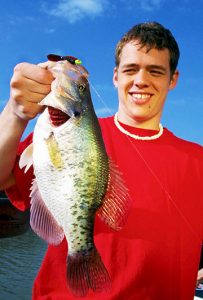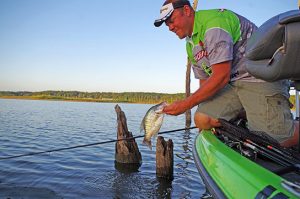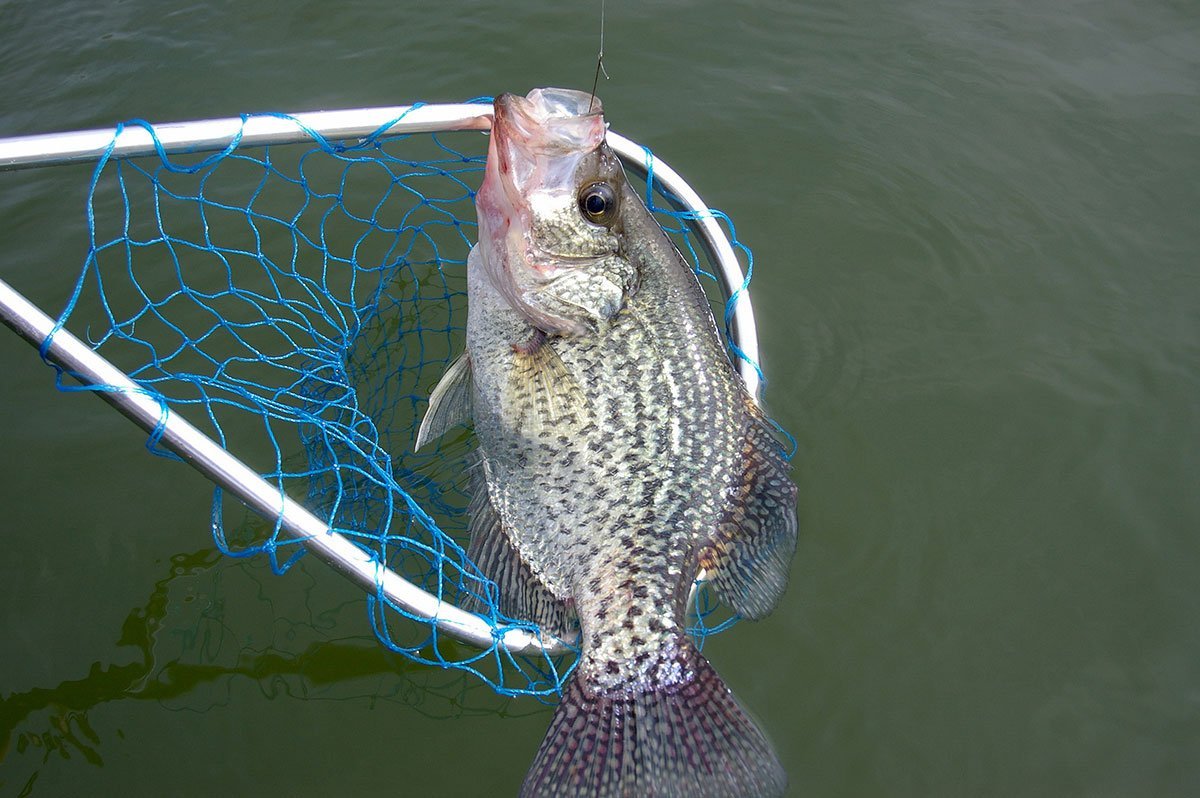By Keith “Catfish” Sutton
The three biggest cities in Tennessee are Nashville, population 692,587; Memphis, 650,618; and Knoxville, 187,500. Fortunately for all the crappie fans living in those metropolitan areas, the Volunteer State encompasses some great crappie lakes less than an hour’s drive from each of these cities. If you’re looking for a hotspot where you can catch a mess of slabs this season, give this trio your full consideration.
Near Nashville: Woods Reservoir
The crappie population is very healthy in 3,980-acre Woods Reservoir on the Elk River in north Franklin County near Manchester, Tennessee. Visiting anglers should find exceptional action for eating-size fish, plus occasional trophies.
Some of the best fishing in early spring is in water as deep as 40 feet around the Elk River channel and old creek channels on the lake’s upper end from the Morris Ferry Bridge to the Bradley Creek area. The shallow coves in this stretch, particularly those on the north side, warm quickly this time of year and hold good numbers of big panfish. As the season progresses, the stretch of river channel between Brumalow Creek and Camp Arrowhead is considered first rate.
Tennessee Wildlife Resources Agency biologists have rated Woods as one of the top three crappie lakes in Tennessee based on per-acre production. While numbers of crappie are considered exceptional, however, sizes are rated as average. Most crappie caught by anglers are in the 10- to 12-inch range, with occasional jumbo slabs thrown in the mix. That means there are plenty of legal fish to be caught. The statewide crappie limit is 15 daily with a 10-inch minimum length limit.
Woods Reservoir is off Interstate 24 east of Nashville via the Arnold Air Force Base exit (117). For additional info, visit the Tennessee Wildlife Resources Agency website, www.tn.gov/twra/.
Near Memphis: Sardis Lake

Thanks to its proximity to Memphis and a healthy population of slabs up to 2 pounds and more, 32,100-acre Sardis Lake in north Mississippi is one of the most popular crappie lakes in the Mid-South. Like crappie everywhere, the population here is cyclic, with up and down years. But a visit to Sardis in spring—prime time for big slabs—will have you believing there couldn’t be a better crappie lake anywhere, any time.
Many anglers like to focus their early fishing efforts on the lake’s south side. All three of Sardis’ major creek coves—Hurricane, Toby Tubby and Clear creeks—are there, and crappie follow the creek channels from deep winter haunts to shallow spring hide-outs. Hurricane gets fished really hard as water temperatures warm up and fish go on a feeding frenzy, but Toby Tubby and Clear attract numerous crappie fanatics, too. Spring fish often move to brush in the backs of the creek coves where a jigging pole and jig are handy for fishing.
Don’t overlook the north side either. There are no major creeks there, but a lot of small ones that hold crappie, which will soon spawn. The coves between subdivisions hold most of the fish. Look in between the major points like Moccasin and Hayes Crossing and up around Teckville. Those are good areas that hold a lot of fish and give cover against a north wind.
Sardis Dam is about 50 miles south of Memphis and east of Interstate 55. The lake can be reached using the Como (Exit 258), Sardis (Exit 252), Batesville (Exit 246) or Oxford (Exit 243A) exits off I-55. For more info, visit the Corps of Engineers’ Sardis Lake website at www.mvk.usace.army.mil/Missions/Recreation/Sardis-Lake/Sardis-Lake-Recreation/.
Near Knoxville: Fort Loudoun Lake
This 14,600-acre lake created by the Tennessee Valley Authority is located at the headwaters of the Tennessee River near Knoxville and extends 55 miles upstream from the dam to the confluence of the Holston and French Broad rivers. It’s been a top destination for local crappie anglers for decades because it keeps producing year after year.

In late winter, crappie still relate to deeper cover and structure where they hold in cold weather, but as spring approaches and the water warms, loose schools become scattered in both deep water and shallow. When they hit the shallows, good places to target crappie include Ish Creek and Gallaher Creek, plus the Concord and I.C. King Park areas. The best fishing usually is around brushpiles and fallen trees.
Here, as in Woods Reservoir and Sardis Lake, jigs and minnows are the baits of choice for most in-the-know anglers. If jigs alone aren’t producing, many anglers tip their lures with small shiners for added enticement. Many anglers troll with multiple poles, which is helpful for locating scattered schools of crappie.
Fort Loudoun runs right through the Knoxville metropolitan area, with numerous access points on roads south of Interstate 40. For additional information, visit www.fortloudoun.info/.



